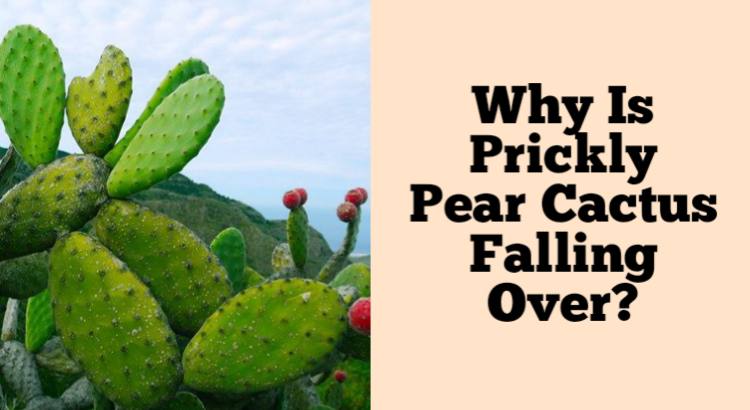Prickly pear cactus is a popular houseplant and a native plant to the Southwestern U.S. As such, it’s not uncommon to see them growing in people’s yards.
But if you find that your prickly pear cactus has fallen over, don’t panic. There are ways to prevent and correct this problem so that your plant remains upright and healthy.
What Causes Prickly Pear Cactus to Fall Over?
Overwatering: Prickly pear cactus plants can be overwatered, which causes the plant to become waterlogged and fall over.
The roots are unable to absorb enough water from the soil after being saturated for an extended period of time.
Underwatering: Underwatered prickly pear cactus plants have a similar problem as overwatered ones; however, it occurs in reverse.
The roots are not receiving enough water for the plant to grow and thrive, so when you do finally give it some moisture, it becomes too much too fast for its root system to handle and results in falling over.
Plant is too young/old: When you have a young prickly pear cactus plant that has just been transplanted into its new home or when you’re growing one from seedlings or cuttings (rather than purchasing one already fully grown).
They may topple over because they don’t have strong enough root systems yet to hold themselves upright.
How Can You Prevent Prickly Pear Cactus From Falling Over?
- Use a stake or trellis to support the plant.
- Plant in well-drained soil.
- Water the plant regularly, especially during dry spells.
- Keep it in a sunny location that gets plenty of sunlight; this is essential for preventing root rot and giving your cactus enough energy to stay upright. You can also add mulch around its base for extra stabilization if needed.
- Prune the plant regularly throughout its life span so that it doesn’t grow too tall or wide—this prevents toppling over from excess weight.
What to Do if Your Prickly Pear Cactus Falls Over
If your prickly pear cactus has fallen over, you’ll need to carefully remove the plant from its container. Remove any soil that’s still stuck to the roots by scraping it off with a knife or spoon.
Then, take the cactus out of its pot and place it back into the hole that was created when it fell over. Fill in around the base of your plant with fresh soil and water thoroughly until no more runs out through drainage holes in its container.
How to Replant a Fallen Prickly Pear Cactus
Remove all soil around the base of the plant by hand. Dig a hole that’s just slightly larger than the root ball, and fill it with a mix of native soil and sand (about 2 to 1).
You can find native soil at local garden centers or online retailers. Place your prickly pear cactus in this new planting bed and backfill until you reach ground level.
Patting down gently but firmly with your hands or feet as needed to make sure there are no air pockets or dry spots where roots could rot away before taking hold in their new home.
If needed, add more dirt until no bare root is visible above ground level before filling in another way around each side of your plant with additional soil mixed with sand until only its topmost part remains above grade line.
This should be just enough space so that water will drain away after light rains rather than collecting around its base due to poor drainage issues caused by too much water sitting directly on top of it over time (which can lead not only to rotting roots but also severe damage from fungal infections).
Pro Tips for Preventing Your Cactus From Falling Over
To prevent your cactus from falling over, make sure the pot has drainage holes and use a large enough pot. Keep in mind that prickly pear cacti are desert plants and need to be watered sparingly.
If you’re not sure how much water is too much for your plant, stick to the general rule of “wet soil,” meaning that when you run your finger down into the dirt, it should come away with dampness on it.
If you have any doubts, err on the side of drying out your plant by watering less often rather than more. If there’s no visible moisture in its soil after the recommended amount of time has passed since last watering (or if it seems like all at once), give it some extra water now—but be careful not to go overboard.
Conclusion
If your cactus is leaning over, it’s important to take the time to make sure it doesn’t end up on the ground. If you don’t have a lot of experience with plants and trees, this can seem like an overwhelming task.
However, there are many ways for anyone who is willing to learn about their environment and do a little research into what may be causing their plant or tree to fall over in the first place before taking any steps towards re-planting them back up again.

